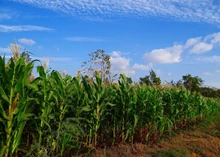
Currently, such data is only measured a few times each year and communicated through Central Groundwater Board publications. Establishing a network that will continuously measure groundwater quality, feed it into a centralised network like the National Water Informatics Centre (NWIC), and make it available for monitoring would make groundwater visible in the same way that air quality, meteorological variables - air pressure, moisture, precipitation - are now, according to Subodh Yadav, Joint Secretary, Department of Water Resources.
"We could potentially provide farmers with groundwater forecasts that would be useful for sowing, as well as updated advisories that could influence groundwater extraction policies by states," he added. "With the exception of information on water flow governed by international treaties, the majority of this information will be available to the public."
In the future, there will be 67,000 recordable units. Currently, the Central Groundwater Board relies on a network of approximately 26 thousand groundwater observation wells, which require technicians to manually measure the quality of groundwater in a region. Around 16,000-17,000 digital water level recorders will be linked to piezometers in wells under the new effort. Piezometers measure groundwater levels, and recorders send the data digitally.
The CGWB intends to expand its network from 26,000 to 40,000 in the next three years. When paired with similar networks owned by other organizations such as state bodies, agriculture departments, and meteorological departments, India will have approximately 67,000 digitally recordable devices to monitor groundwater dynamics. "This is a continuous process, and we will have to keep increasing our monitoring for better, higher resolution data," Yadav explained.
The CGWB is in charge of the National Aquifer Mapping Programme (NAQUIM), which has mapped the country's aquifers at a resolution of 1:50000 as of March and plans to improve the resolution by five times in the country during the second phase of the programme. The NAQUIM research have so far covered an area of 25.15 lakh square kilometres.
According to the most recent Ground Water Resource Assessment-2022, the total annual groundwater recharge in the country is 437.60 billion cubic metres (BCM). The yearly extractable groundwater resource has been estimated as 398.08 billion cubic metres, with actual extraction at 239.16 billion cubic metres. The average stage of groundwater extraction in the country is approximately 60.08%. Anything exceeding 70% is deemed "critical," yet there are areas in Punjab, Haryana, Delhi, and Rajasthan where groundwater exploitation exceeds 100%.
According to reports over the years, 85% of rural India uses groundwater for drinking and residential needs. Water levels in monitoring wells have either remained steady or decreased in cities with populations more than 10 lakh. According to the CGWB, groundwater contamination is primarily "geogenic" (natural) and hasn't altered considerably over time. However, nitrate pollution has been found as a result of the usage of nitrogenous fertilizers.
Fluoride pollution has been confirmed in sections of roughly 409 districts, and arsenic contamination has been detected in sections of 209 districts. Yadav stated that those places and states known to suffer groundwater contamination, such as coastal salinity or extreme depletion, will be closely watched for state action.











